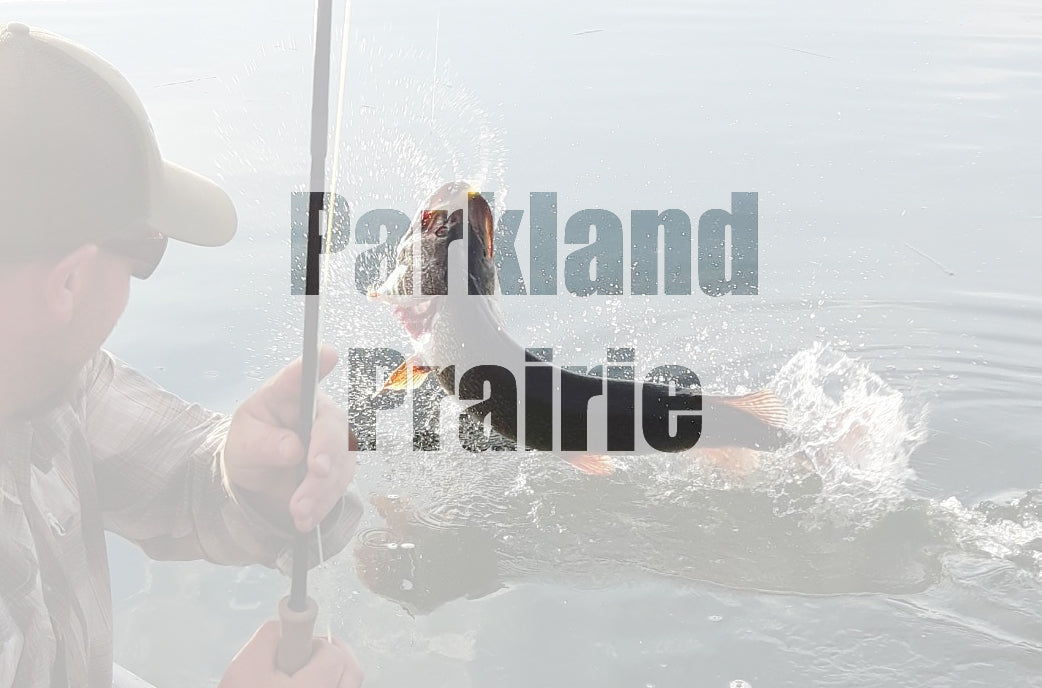
Parkland Prairie Reservoirs
The pike season is upon us, and it has been quite successful so far! We understand that pike fishing may not be everyone's cup of tea, but for those considering giving it a try, here are some valuable pieces of advice.
Here are some steps to guide you towards the exhilarating experience of reeling in that next pike of a lifetime:
1. Equip yourself with the right gear: Pike are powerful adversaries and demand heavy-duty tackle. This includes an 8-10 weight rod, a reel with a robust drag system, 30-40 pound test fluorocarbon leaders, and wire tippets to prevent the fish from biting through the line.
2. Choose your flies wisely: Pike are voracious hunters and will strike at nearly anything that moves. Large streamers, such as pike flies, are highly effective. Experiment with various colors and sizes to enhance your chances of success.
3. Seek out the perfect location: Pike thrive in warmer waters where they can bask in the sun and stealthily ambush their prey. Look for areas with structure, such as weed beds, drop-offs, and submerged logs, among other features.
-
Building off of the perfect location there are some things that we suggest doing in advance so that you can up your chances of catching a good fish. They are as follows:
- Research: Before you head out, research the body of water you'll be fishing in. Look for information on the type of structure where pike are commonly found. This could include weed beds, submerged logs, rocky areas, drop-offs, points, or shallow bays.
- Use a Fish Finder: If you have access to a fish finder, use it to locate underwater structures where pike might be hiding. Look for changes in depth, underwater vegetation, or schools of baitfish that can attract pike.
- Underwater Topography: Understand the underwater topography of the area you're fishing. Pike often lurk near drop-offs, submerged points, and areas with irregularities in the bottom structure where they can ambush prey.
- Weed Beds: Pike are notorious for lurking around weed beds, especially in the early morning or late afternoon. Cast your bait or lures along the edges of weed beds or use weedless rigs to avoid getting snagged.
- Submerged Structures: Submerged logs, fallen trees, or rocky outcrops provide ideal hiding spots for pike. Cast your bait or lures near these structures, allowing them to sink into the water where pike may be lurking.
- Shallow Areas: During cooler months or in the early morning and late evening, pike may move into shallow areas to feed. Look for shallow bays, flats, or areas with submerged vegetation where pike might be hunting.
- Experiment with Depth: If you're not getting any bites at one depth, try fishing at different depths until you find where the pike are feeding. This may require adjusting your bait presentation or using different lures to target different depths.
4. Cast your fly strategically: To entice pike, cast your fly near the structure, along the shore, or over a drop-off. Utilize a slow, erratic retrieve to mimic the movements of an injured fish. Exercise patience, as pike may trail your fly before making a move.
5. Set the hook decisively: When a pike strikes, swiftly set the hook with a forceful, upward motion. Reel in the slack line promptly to prevent the fish from shaking off the hook.
6. Safely land the fish: Make sure you bring a net, as pike boast sharp teeth and can pose a danger (our shop offers a selection of new tools from Loon that simplify this part of the process). Always handle the fish with care and release it promptly to contribute to a thriving pike population.
Flies
Streamer’s: Jakes Pike Bait Black/Purple #4/0, Brennan’s Iceman #3/0, McClure's Kill Whitey Black #1/0, Jake's Burgler Chart #1/0, Devils Tickler #5/0, Zukowski’s Pike Picnic White #5/0, Trick or Treat #5/0, Madson's Pike Fly #3/0, Gen X Pike Bunny #1/0, Zukowskis Dr. Jekyll #5/0, YFG Depth Charge #4, Krafts Kreelex Chartreuse/Brown #4, Sparkle Worm Orange or Red #12-14, Chironomid Static Bag/Red Wire #12 and 16, Chironomid Static Bag/Red Rib #12-14
Products
View all
